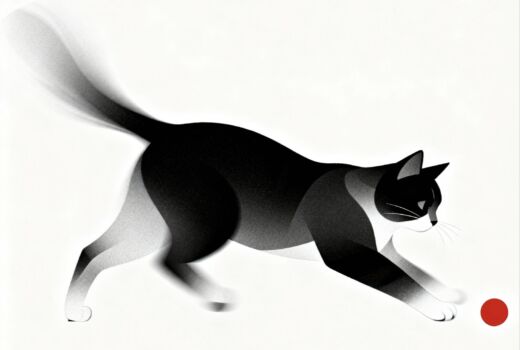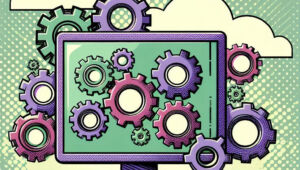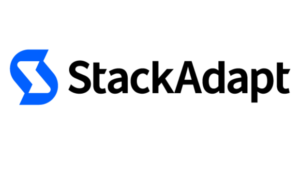Ad Tech Innovation, or the Cat and the Laser Pointer
by Shirley Marschall on 12th Nov 2025 in News

In this week's column, Shirley Marschall looks at ad tech's addiction to shiny new things, how the industry loves a new distraction, and why every year has to be 'the year of...' something...
The following story is based on true events. Not one, not a few, but dozens across media agencies, advertisers, publishers, and ad tech vendors. Locations and company names don’t matter, because everyone who’s spent more than five minutes in ad tech has seen this show before.
It’s called 'innovation'. Or 'the Year of' . Or more accurately: 'the Cat and the Laser Pointer.'
Because every single time someone waves a new trend across ad tech, the industry reacts like a cat with a laser pointer. We sprint, reorganise, form task forces, and completely forget what we were doing five seconds ago.
This isn’t about AI, at least not just about AI. This has been happening over and over again, and if you’ve worked in advertising long enough, you’ve survived more 'years of...' than you can count.
- 2025 was the Year of LLM AI.
- 2024 was the Year of CTV.
- 2023 was the Year of Retail Media.
- 2022 was the Year of Attention.
- 2021 was the Year of Privacy First.
- 2020 was the Year of Cookie Deprecation.
- 2019 was the Year of ML AI.
- 2018 was the Year of Brand Safety.
- 2017 was the Year of GDPR.
- 2016 was the Year of Viewability.
- 2011–2015 were the Years of Mobile.
- 2010 was, of course, the Year of Mobile.
Every year, a new trend appears, someone 'flips the script', declares something dead or alive … you know the drill. What’s fascinating is the industry’s default reaction: instead of collectively rolling our eyes, the entire industry descends into madness.
Ad tech action stations
What happens now is almost comical. Task forces form overnight, as if it’s a most-wanted case. Special forces, milestones, AHODs, daily stand-ups, Slack channels… the entire shebang appears out of thin air.
Vendors are vetted, products are built on the flight. Hundreds of proofs of concept are being defined and test budgets secured. Integrations are built, contracts negotiated. Senior management wants updates in two weeks, no, two days, actually, yesterday. 'Transform the business' becomes the slogan du jour.
Meanwhile, 'run the business' - the part that actually makes (or spends, depending on the part of the ecosystem) money - becomes a pet project. Keep the machine humming, but don’t expect a thank-you card or, even more delusional, a promotion for it.
And let’s not even talk about AI, let’s take a not-so-distant, still-painful example instead.
For five long years, cookie deprecation fuelled the biggest wave of ad tech 'innovation' since mobile. The industry went all in, and solutions came fast and in all forms and shapes imaginable: universal IDs, privacy sandboxes, ID graphs, cohorts, data clean rooms, contextual 2.0…you name it. Every roadmap, every conference panel, every pitch deck revolved around the same premise: a future where cookies were dead and a future where a solution will fill in this exact blank space which was created.
Then, with a single blog post, Google (un)flipped the switch.
STOP. The cookie survived.
Suddenly, all the work, those carefully documented POCs, vendor contracts, integrations, slide decks, conference panels…all obsolete overnight. Cue the legal teams, scrambling to undo contracts for products no one needs anymore. Cookie deprecation became a full on cookie depression… until AI arrived.
AI's turn in the hype cycle
The AI hype cycle moved so fast that companies risked looking outdated if they didn’t claim an AI strategy immediately. Sounds familiar, doesn’t it? Doesn’t matter…just say 'AI-powered' and ship something. And here we were again, innovating, task forcing and following the laser pointer. And the cycle repeats.
Sure, the labels change - cookies, IDs, attention, AI - but the behaviour stays the same. The ecosystem doesn’t just react; it completely overreacts. And in the process, creates an unreal amount of waste. Not just financial waste, but human waste: time, energy, expertise all burned on projects no one will remember in a year.
What really lasts after each of these chases? Nothing (thanks for the journey and farewell, Google Privacy Sandbox) in the worst case. A few good products in the best case.
Yes, of course, sometimes 'innovation' does indeed lead to the real thing…innovation. Not every new thing ends up worthless (after all, the flip side of innovation is stagnation). But even the genuine breakthroughs tend to emerge after the frenzy, not during it…after the noise dies down, when teams finally have space to think clearly.
So why do we keep doing this to ourselves? Why can’t we take a breath and decide whether an 'innovation' is worth dedicating time, brainpower, and resources to in the short term?
Partly because it’s how ad tech stays alive. The constant chase which keeps investors interested, employees excited, and executives relevant. Standing still looks like failure, even when standing still might actually be the smartest move.
But partly, it might be cultural. As Jay Mandel, founder of the Marketing Accountability Council (MAC) put it, "the throwaway economy has come for marketing too." The same throwaway-economy mindset that makes us celebrate 'fast fashion', 'move fast and break things', 'fast followers', and 'first movers', basically anything as long as it’s….well, fast.
Ad TechAgentic AIAIArtificial IntelligenceAttentionIndustry InfrastructureSlop











Follow ExchangeWire